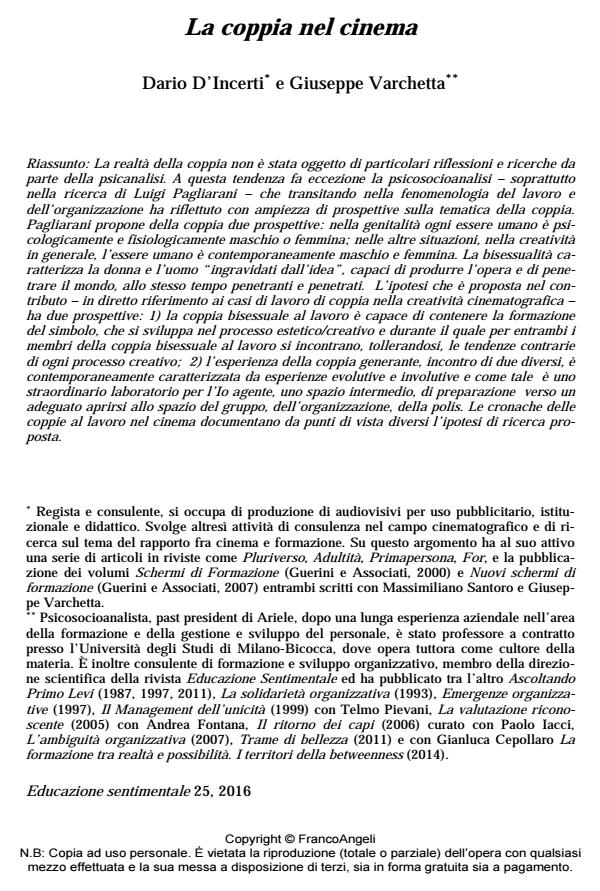La coppia nel cinema
Journal title EDUCAZIONE SENTIMENTALE
Author/s Dario D'Incerti, Giuseppe Varchetta
Publishing Year 2016 Issue 2016/25
Language Italian Pages 18 P. 108-125 File size 136 KB
DOI 10.3280/EDS2016-025010
DOI is like a bar code for intellectual property: to have more infomation
click here
Below, you can see the article first page
If you want to buy this article in PDF format, you can do it, following the instructions to buy download credits

FrancoAngeli is member of Publishers International Linking Association, Inc (PILA), a not-for-profit association which run the CrossRef service enabling links to and from online scholarly content.
The couple in cinema. The reality of the couple was not the subject of particular reflection and research by the psychoanalysis. Psychosocioanalysis is an exception: through the phenomenology of the work and the organization psychosocioanalysis reflected the perspectives on the issue of the couple. Pagliarani offers two perspectives of the couple: in genital every human being is psychologically and physiologically male or female; in other situations, in creativity in general, the human being is both male and female. Bisexuality characterizes the woman and the man "impregnated by the idea", capable of producing the work and to penetrate the world, at the same time penetrating and penetrated. The hypothesis that is proposed in this contribution - in direct reference to the cases of couples work in film creativity - has two perspectives: 1) the couple bisexual at work is able to contain the structuring symbol, which develops in the aesthetic/creative process and during which both members of the bisexual couple meet contrary trends; 2) the experience of the creating couple, meeting of two different, it is simultaneously characterized by developmental experiences and regressive and as such, is an extraordinary laboratory for the agent subject, an intermediate space, in preparation for adequate meeting the open space group, the organization, and the polis. The chronicles of couples to work in film creativity from different points of view documents the hypothesis of the proposed research.
Keywords: Bisexuality, genital couple, internal bisexual couple, gender, difference, parity, equality, plurality, primary task, couple and organizational experience, couple engaged in creativity
Dario D'Incerti, Giuseppe Varchetta, La coppia nel cinema in "EDUCAZIONE SENTIMENTALE" 25/2016, pp 108-125, DOI: 10.3280/EDS2016-025010